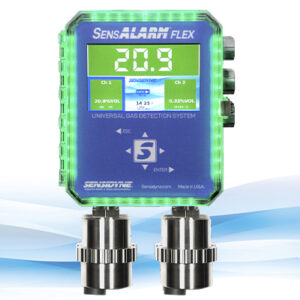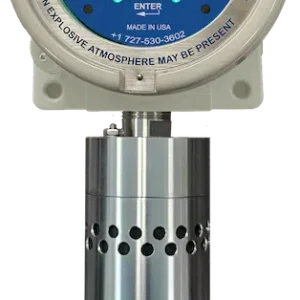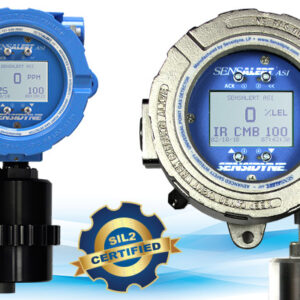In SensFlex, a flexible and highly-capable set of features combine to provide dual-head point gas monitoring or deployment of a powerful Photo Ionization Detection (PID) sensor for detection of Volatile Organic Compounds (VOC).
- Brand
- OVERVIEW
Brand
Sensidyne
OVERVIEW
Maximum Facility Flexibility
• Ethernet standard, communicates simultaneous Modbus TCP master/slave
• Embedded web pages for remote configuration and display
• Optional relays for alarm contacts and dual Modbus configuration
• Remote mountable sensors for monitoring near high concern locations
• Maintenance mode to avoid false alarms
Safety without Compromise
• Certified for Division 1 and 2 hazardous classified areas
• Configurable relays and redundant Modbus communication
• Uploads application parameters and gas & alarm data
• Time-stamped event and calibration data
• Fault supervision circuitry for error warning
User Friendly and Intuitive
• Bright QVGA color TFT display with highly visible graph and trend
• Sensor status indicated by color change and flashing display
• Hot-swap sensors and non-intrusive user interface for easy maintenance
• Accessible data via mobile devices and laptops
Highly Flexibility Configurations to Meet Facility Requirements
The SensFlex platform is available in two models to meet facility application requirements. The first uses the powerful transmitter platform to drive a high-performance photo-ionization detector (PID) sensor. This sensor provides dependable response to thousands of volatile organic compounds (VOCs). Advanced technology allows the PID model to excel even in high-humidity applications while the anti-contamination design protects it from moisture, dust, and aerosols.
The second model extends the SensFlex transmitter platform allowing simultaneous dual gas monitoring from two different sensors. This dual-head design is highly attractive in many applications where sensing previously required two separate transmitters. It doubles the output capabilities providing independent output and communication for each sensor head. The display can cycle between sensors or split the screen showing the two measurements.







